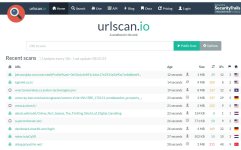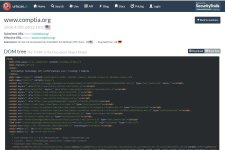Fellow Instructors,
In Security+ and again in CySA+ (and CASP+) students need to understand how the www works. I often use Virustotal dot com to briefly demo how to investigate suspect urls and files. I found another web based (free to use) tool that helps explain more. That's urlscan dot io. I should provide a hat tp to some of my SOC colleagues from LinkedIn who have been pointing at this for a few weeks.

A user submits a url and urlscan goes off and scans the site. I chose to scan comptia.org.

The scan returns info about the site and http transactions (with associated response codes). Note CompTIA dot org is being served (to me) via an IPv6 address in the USA. You can show all of the elements that make up a web page. You can show the site certificates and check their expiration. Another great capability is to show the DOM scripts served from the site to the client browser.

Warning: Make sure that you scan the site in advance and develop your own 'script' about which fields you are going to share with students. There is a ton of info here and you want to avoid having students asking about each and every field.
That said I was able to turn this into a short (less than 10 minutes) demo that graphically links different concepts important to the course.
Enjoy!
Brian
In Security+ and again in CySA+ (and CASP+) students need to understand how the www works. I often use Virustotal dot com to briefly demo how to investigate suspect urls and files. I found another web based (free to use) tool that helps explain more. That's urlscan dot io. I should provide a hat tp to some of my SOC colleagues from LinkedIn who have been pointing at this for a few weeks.

A user submits a url and urlscan goes off and scans the site. I chose to scan comptia.org.

The scan returns info about the site and http transactions (with associated response codes). Note CompTIA dot org is being served (to me) via an IPv6 address in the USA. You can show all of the elements that make up a web page. You can show the site certificates and check their expiration. Another great capability is to show the DOM scripts served from the site to the client browser.

Warning: Make sure that you scan the site in advance and develop your own 'script' about which fields you are going to share with students. There is a ton of info here and you want to avoid having students asking about each and every field.
That said I was able to turn this into a short (less than 10 minutes) demo that graphically links different concepts important to the course.
Enjoy!
Brian

